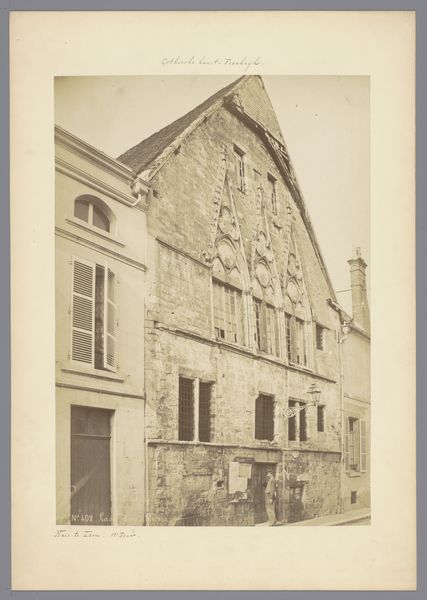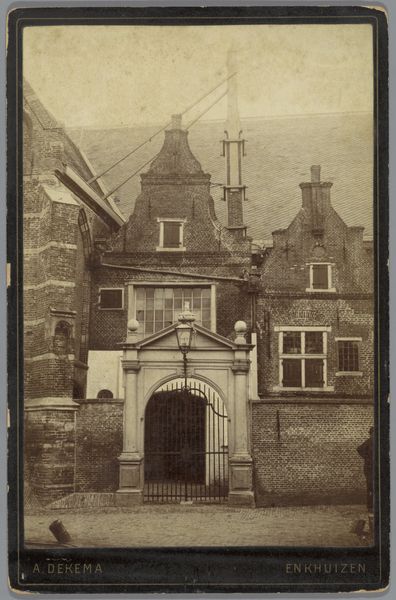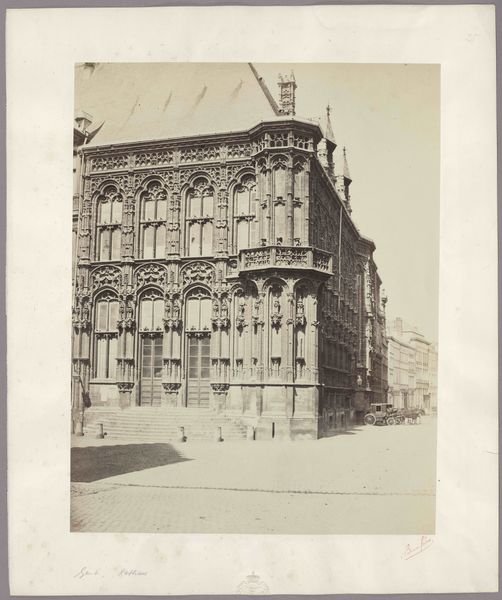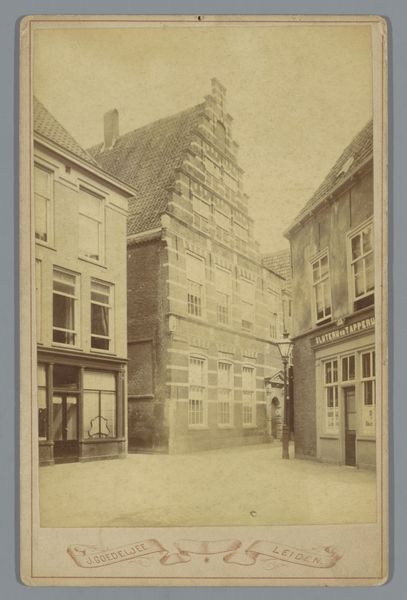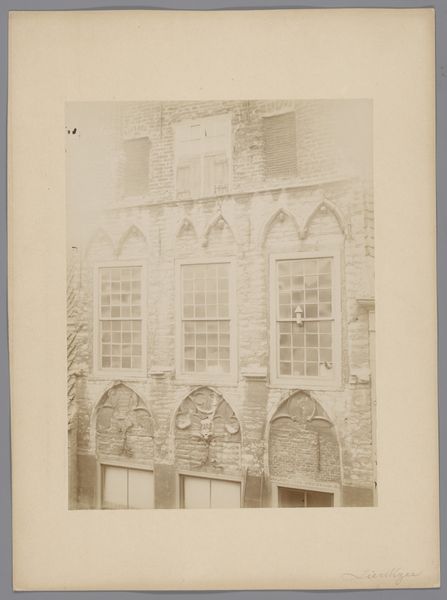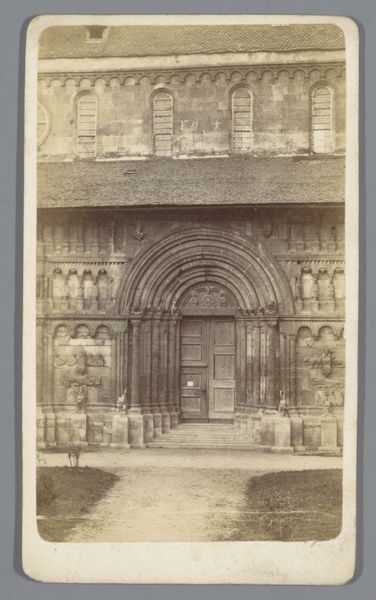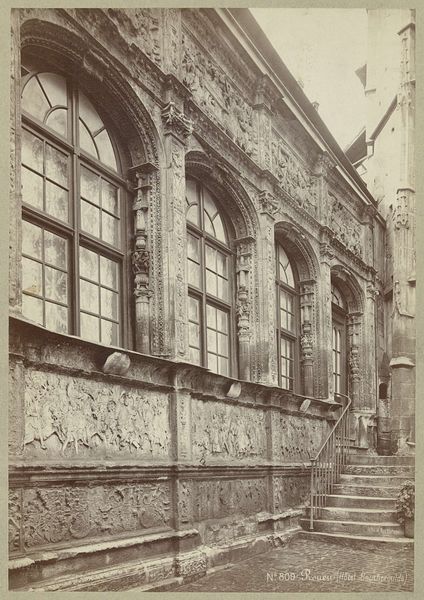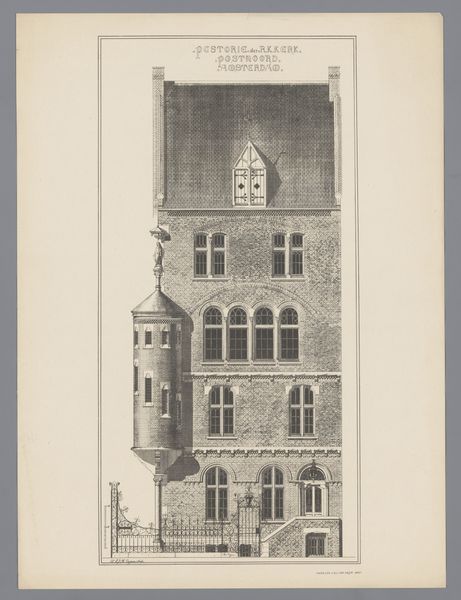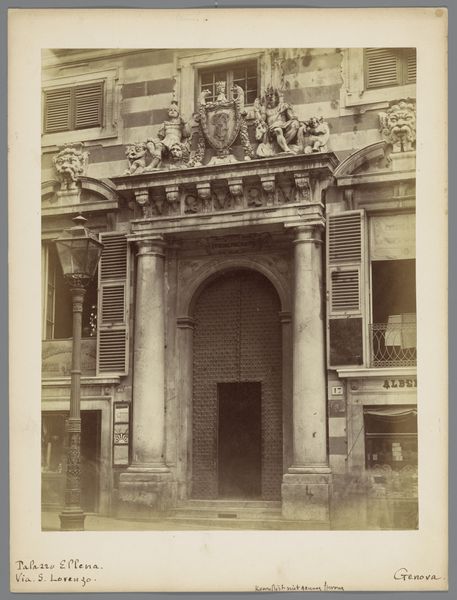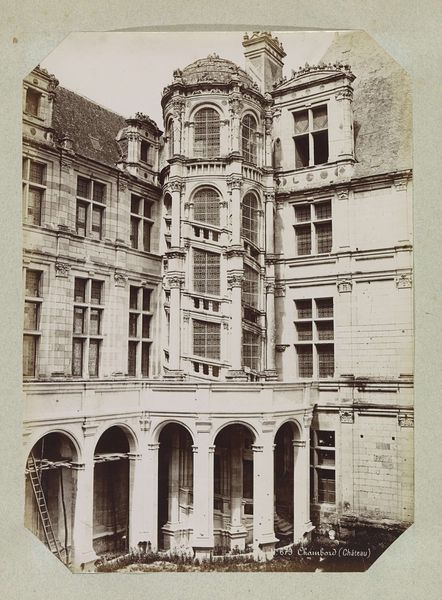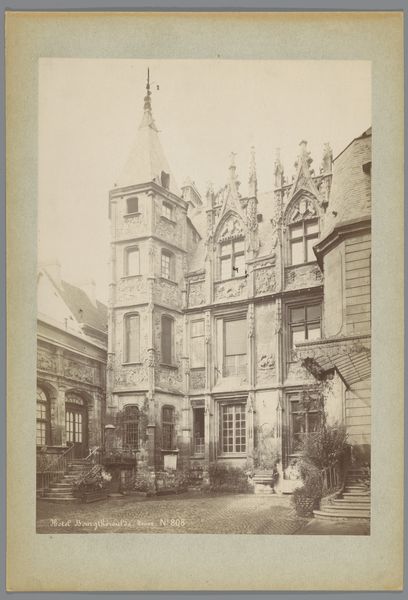
photography, albumen-print
#
photography
#
cityscape
#
albumen-print
#
realism
Dimensions: height 363 mm, width 267 mm
Copyright: Rijks Museum: Open Domain
Editor: This albumen print, "Exterieur van het stadhuis van Beaugency" by Médéric Mieusement, captured sometime between 1875 and 1900, presents the facade of a city hall. The muted tones give it such a serious, almost somber quality. What can we say about its deeper meaning? Curator: The stillness of this image belies the turbulent social and political landscape of late 19th-century France. Think about it: photography, then a relatively new medium, was democratizing representation. Who had the power to portray French identity, and what narrative did they want to convey? This stately building is more than bricks, it represents entrenched power, usually held by the elite. Editor: So, this photograph could be read as a statement about class structure at the time? Curator: Absolutely. Notice how the architecture emphasizes the building's grandeur. How does that communicate with those on the outside? While capturing reality, it can also subtly critique it, or even reinforce it. Whose perspective is prioritized and how does that affect whose stories are valued? It begs the question, how might people engage in that space in an era of political change and increasing industrialization? Editor: It’s fascinating to consider that what appears like a straightforward architectural study carries these layers of socio-political implications. Curator: Exactly! Understanding the history around these art objects can empower us. The photo itself becomes an act of interpreting power relations. This lens allows for a broader, intersectional narrative of art and culture. Editor: I’ll definitely view photography, and other art, differently now. Thank you for pointing out the social implications. Curator: My pleasure. Keep asking questions, challenge dominant narratives, and you will transform not only your understanding of art history, but also your role in the broader cultural landscape.
Comments
No comments
Be the first to comment and join the conversation on the ultimate creative platform.
